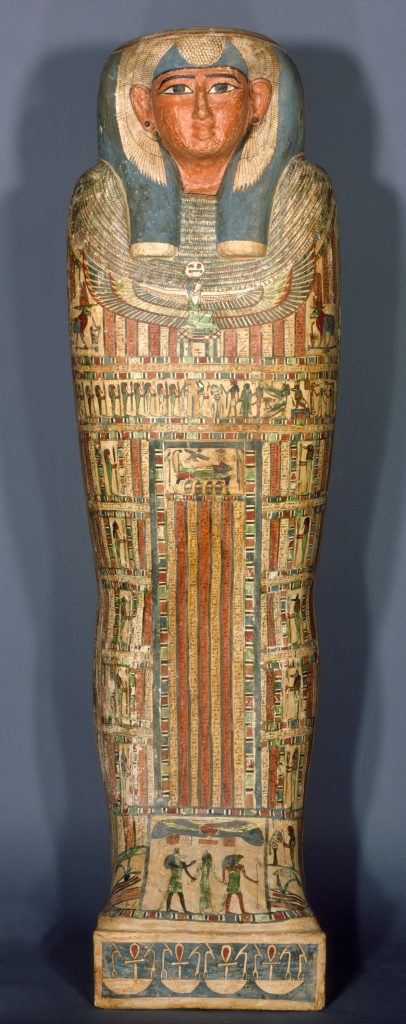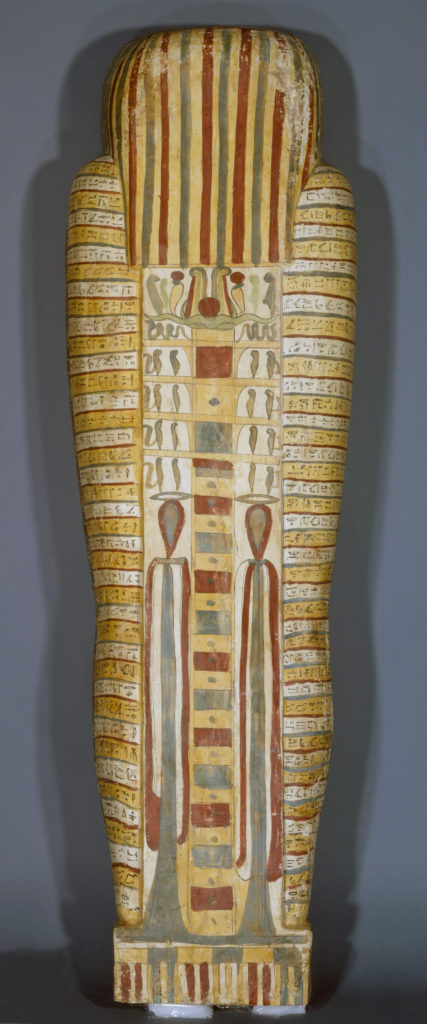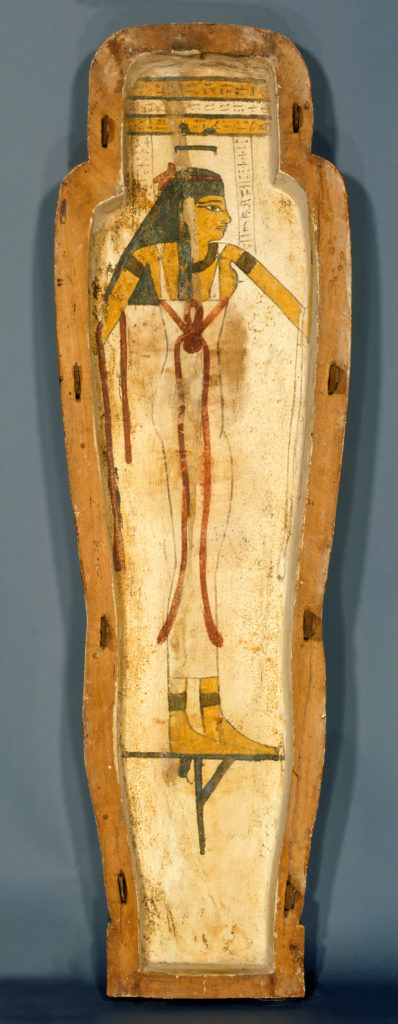Inner Coffin of Djedmut (work of art)
Artwork Info
About
Key Ideas about this Work of Art
- This mummy coffin is a generic representation of a young woman rather than an exact portrait. The colors used in Egyptian art, such as those used on the coffin, often have symbolic meaning connected to nature and the afterlife.
- This human-shaped wooden coffin depicts a woman named Djedmut (pronounced jed-moot). It is called an inner coffin because it was placed inside a larger, rectangular box.
- The images painted on the coffin are illustrations from the Book of the Dead. These images were intended to ensure that Djedmut had all the goods she would need for the afterlife. The hieroglyphs on the coffin include Djedmut’s name and indicate that she was the daughter of a man called Nakht-Hor-eru and his wife Katch-en-Hor.
Learn More
This wooden anthropoid (human-form) coffin was the final resting place of a woman named Djedmut, as identified by the hieroglyphs painted on the surface. She was the daughter of a man called Nakht-Hor-eru and a woman called Katch-en-Hor. Djedmut’s facial features are painted in a stylized way, showing her as an eternally young and beautiful woman. She wears a wig, small earrings, and a colorful, broad collar around her neck and shoulders.
The images painted on the coffin are illustrations from the Book of the Dead, and the hieroglyphic texts offer formulas ensuring Djedmut has all the necessary goods for the afterlife. In the first horizontal band under the image of the goddess Nut, depicted with her arms spread wide, Djedmut’s heart is being weighed against the feather of truth (far right). Since her heart is as light as the feather, it is deemed honest and truthful. Thoth, an ibis-headed god, and Ma’at, the goddess of truth (shown at the center of the scene), are depicted introducing Djedmut to Osiris, the god and king of the dead.
On the inside of the coffin and the lid, the goddess Nut is depicted standing on a divine perch. As the goddess of the sky, Nut was said to give birth to the sun every morning. She was also the mother of Osiris, who was mummified and reborn after death. Once the mummy was placed inside the coffin and the lid closed, the deceased was symbolically inside the womb of Nut and thus would be like the sun and Osiris reborn.
tags: ritual, pattern, function, Ancient Egypt, identity, meaning, power, survival
Additional Resources
Resources for Teachers
- Take a look at a step-by-step guide to mummification.
- Read an article that explains how one mummy can have many coffins.
Resources for Students
- Learn more about mummies.
- Watch a video to see how mummies are made.
- Learn about the different layers of an Egyptian mummy.




